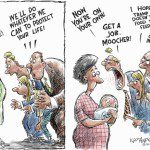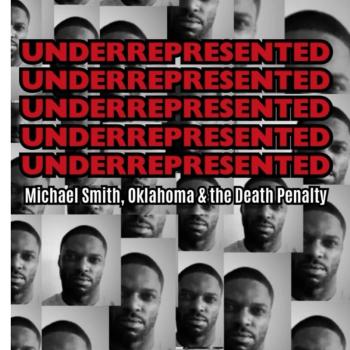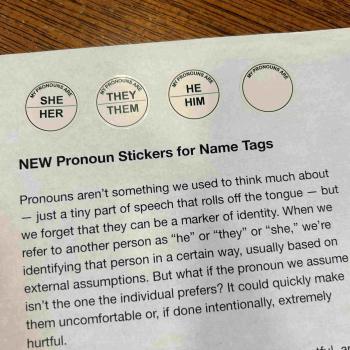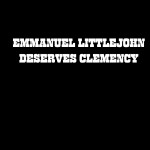Abiding by Bowling
The Big Lebowski and Ecclesiastes
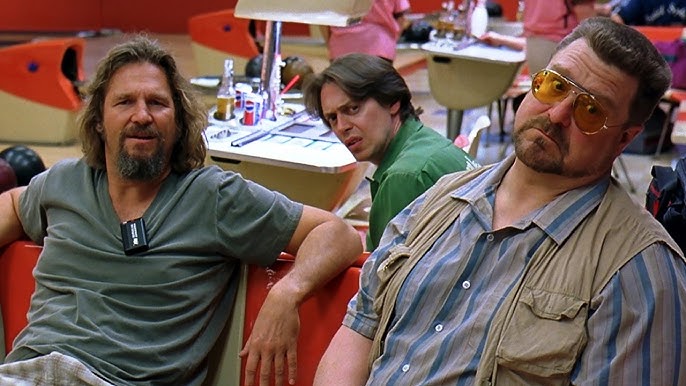
Although now considered a cult classic, the Coen Brothers’ early film The Big Lebowski did not receive immediate acclaim. In fact, it barely broke even on its estimated budget of $15 million.[1] However, in the years that proceeded, a strange thing happened. Film scholars J.M. Tyree and Ben Walters describe it as such:
Legions of dedicated fans turned “The Big Lebowski” into a cult phenomenon and a hipster bible, quoting chapter and verse from its dialogue and dressing up like its characters at parties, screenings, and conventions, many of which were held in bowling alleys. . . .The picture began to take on the status of scripture, with the Dude as a downat-heel Zen master for a debased postmodern age.[2]
Although some elevate the screenplay itself to scripture, the film has plenty of themes that overlap with a piece of legitimately canonized scripture: Ecclesiastes. Similar to the film’s reluctant reception, this book is seldom preached on, save for a foreboding pair of occasions—weddings and funerals—and touts “a cynicism and even a despair that seem out of place in the Bible’s grand narrative.”[3] By examining the elements of narrative depicted in the film’s opening scenes as well as the motifs throughout, I will unpack the power of The Big Lebowski, showing how it effectively translates the message of Ecclesiastes into postmodern American speak.
Several years ago, prolific film critic Mike D’Angelo embarked on a curious tour de cinéma, subsequently recording his observations in an article he penned for the popular culture website The A.V. Club. The piece, aptly titled “What I Learned From Watching the First 10 Minutes of 500 Movies,” offers a list of takeaways, led by: “10 minutes is more than enough to identify mediocrity.”[4] He writes:
People who read screenplays professionally often say that the vast majority of scripts are dead in the water by page 10. Completed films are no different. . . .When a movie is firing on all cylinders, waiting to see where it’s headed is a pleasure. Its opening minutes should extend an invitation.[5]
Suffice it to say, the openings of movies are important. In The Big Lebowski, even the five minutes and 43 seconds that precede the opening credits do more than merely refute mediocrity: they successfully frame the story that is to follow.
In their book Deep Focus, authors Robert K. Johnston, Craig Detweiler, and Kutter Callaway borrow aspects of literature in order to analyze film. The four “constitutive parts” that make up every story are character, setting, plot, and tone (or “point of view”). “In any given telling of a story,” they claim, “one or another of these four aspects of the narrative will be emphasized or given precedence.” Thus, “By reflecting on a story’s makeup, the audience can find a key to the heart of a story.”[6]
In the aforementioned six-or-so minutes that bring The Big Lebowski to life, each element is presented. First, a single-camera shot follows a tumbleweed as it rolls across the desert to overlook the glistening cityscape of Los Angeles (setting). By this point, the audience is already hearing a voice-over by what the script deems “a deep, affable, Western-accented voice”[7] (point of view). After a montage of clips follows the tumbleweed through various LA sites, the scene cuts to the interior of a Ralph’s grocery store. Here, a frumpy middle-aged man turns the corner and inspects the milk aisle, eventually opening a quart and furtively taking a swig; the narrator informs us that this is Jeff Lebowski, who calls himself “the Dude” (character). He also informs us that this story “took place back in the early nineties—just about the time of our conflict with Sad’m and the Eye-rackies.”[8] Shortly thereafter, the juxtaposition between this historical moment and the present scene is confirmed at the Ralph’s register, where a small television shows a clip of George Bush on the White House lawn saying “This will not stand” as the milk-mustached Dude lazily makes out a check to the cashier for sixty-nine cents (atmosphere).
Incidentally, it is the latter two elements that are “given precedence”[9] in this film. Like a camera directing one’s gaze, the opening scenes effectively zoom into the story’s emphases: character and atmosphere. This is compounded by the following narration: “some-times there’s a man—I won’t say a hee-ro, ’cause what’s a hee-ro?—but sometimes there’s a man. And I’m talkin’ about the Dude here—sometimes there’s a man who, wal, he’s the man for his time’n place, he fits right in there—and that’s the Dude, in Los Angeles.”[10] At this point, the film is at less than half of D’Angelo’s time window—and there is one element markedly missing: plot. Hence, the scene cuts to the Dude entering his bungalow to find two men who—clearly mistaking the Dude for a different, richer, Lebowski—proceed to violently threaten the Dude while he imperturbably quips back (plot).
However, even this scene works to communicate the personality of the Dude, who by this point is clearly the film’s protagonist. Promptly after the opening credits roll, the supporting character (Walter) is introduced, alongside their meek and ever-confused third musketeer (Donny). Right up until the ten-minute mark, the three-man bowling team discusses the events of the previous night while taking turns rolling.
Johnston et. al. rightly claim that “While spectacle may draw us to the cinema, it is the plight of the characters that gets us invested in a story. . . . We hunger for heroes.”[11] However, calling the Dude—this unemployed, pot-smoking, and White-Russian-drinking pacifist—a hero feels like an overstatement. Contradictory to the name that dons the film’s title, the main character goes by a subego, consistently rejecting references to his given name (e.g., “Look, nobody calls me Lebowski. You got the wrong guy. I’m the Dude, man.”[12])
This is in stark contrast to the other Lebowski—the one who lives in a mansion and should really be mixed up in the dizzying series of events that began with owing a large debt to a porn empire mogul. Elmers notes how this speaks to “one of the film’s many cultural resonances,” which is its “demolition work on certain American mythologies involving the success ethos and the marginalization of losers, flakes, and outsiders who cannot seem to make it within the parameters of the American gospel of prosperity.”[13] When the two Lebowskis initially meet, the Dude’s counterpart yells “Your revolution is over! Condolences! The bums lost!” According to Elmer:
The scene hilariously combines a representative of the 1960s ethos of hippie burnout with a synecdoche of the unwarranted arrogance of 1980s and 1990s triumphalism about the march of capitalism to The End of History. . . .“I’m a Lebowski, you’re a Lebowski,” mutters the phony tycoon who denies the brotherhood of man but turns out to subsist on a handout from a strong and competent woman. In the diverse and homey bowling alley of the film’s credit sequence, by contrast, the lowbrow entertainment of cheap play brings together Americans from all backgrounds and classes. How like Hollywood movies at their best.[14]
In a later scene featuring the antithetical pair, Mr. Lebowski asks the Dude what makes a man, and then postures: “Is it being prepared to do the right thing? Whatever the price?” Ever exuding classlessness, the Dude responds: “That and a pair of testicles.” This concept of “the Man” amounts to one of the film’s motifs. Not only does it show up in audio form in Bob Dylan’s song “The Man in Me,” but also on a magazine cover in the words “Man of the Year”—which is really just a mirror that reflects the Dude’s sunglassed face as he inspects it. It also debuted in the narrator’s opening monologue, when he settles on calling the Dude “the man” after “hee-ro” didn’t quite fit.
The authors of Deep Focus rightly pose that “American movies tend to follow two basic types—ordinary people caught up in extraordinary situations. . . or extraordinary people struggling to resist the forces that cause them to reveal their remarkable gifts.” [15] The film makes clear that its protagonist is of the former sort—he is ordinary. At the same time, however, it makes clear that he is the Man. And, he is in fact, the Big Lebowski—which can be subtly surmised from the fact that the narrator calls the Dude’s soon-to-be offspring “little Lebowski.”[16]
The film is riddled with further expectation reversals: a renowned screenwriter is reduced to life in an Iron Lung, the only innocent and inert character dies towards the end of the movie, and, after the Dude tries to stop further break-ins by nailing a doorstop to the floor, the door immediately opens the other way and he is harassed once again. Later, the Dude stealthily rubs a pencil across a notepad that crucial information had presumably just been scrawled on, only to trace a crude graffito that had been drawn there instead. The incidents go on and on.
Referring to the titular character specifically, Elmer writes:
Somehow we have to think together the fact that the Dude is the man for his time and place, and that he is over and over again in the wrong place at the wrong time. . . This double condition—central and adrift, exemplary and underdetermined—is what is at stake in the Dude’s mode of being, namely abiding.[17]
At face value, this last term—abiding—might appear the only point of congruence between The Big Lebowski and the Old Testament text Ecclesiastes. It certainly appears in the most quotable lines in both: namely, “The Dude abides” in the former, and “One generation passes away, and another generation comes; But the earth abides forever”[18] in the latter. Although the resonance is strong, the two works actually bear a resemblance from their very beginnings.
While The Big Lebowski begins and ends with words from an unknown and out-of-place narrator, Ecclesiastes is bookended in a similar fashion. In his introduction to the book, Brent A Strawn writes:
The teaching found in Ecclesiastes is difficult to summarize because most of the book lacks a clear or easily understood structure. There is an editorial frame at the beginning and the end . . . The rest of Ecclesiastes . . . covers a number of topics in a nonlinear, sometimes repetitive, and often contradictory fashion. These factors makes it hard to understand the book, though they maybe part of the Teacher’s strategy to force the reader to feel his frustrations about life and wisdom.[19]
Similar to Strawn’s description of Ecclesiastes, J.M. Tyree labels The Big Lewbowski a “labrynthine story. . .in which a down-to-earth detective pinballs his way through various strata of Los Angeles’ human wildlife while investigating a bizarre kidnap-ransom plot.” Seeing as confusion and absurdity are embedded into both, neither “text” is necessarily about what happens, but about how to deal with it.
In The Big Lebowski, it is when the characters are knee-deep in their plight that they relent and say “Fuck it, let’s go bowling.” Walter says it after getting shot, when a hand-over of ransom money went completely awry. He repeats it again after scattering Donny’s ashes, which get taken up by the wind and coated onto the Dude’s face. This scene in particular speaks to a section of Ecclesiastes: “all are from the dust; all return to the dust. . . . So I perceived that there was nothing better for human beings but to enjoy what they do because that’s what they’re allotted in life.”[20] Several chapters later, Qoheleth comments on the pervasive nature of death as well as the reversal of expectations:
The righteous and the wise and their deeds are in God’s hands, along with both love and hate. People don’t know anything that’s ahead of them. Everything is the same for everyone. The same fate awaits the righteous and the wicked, the good and the bad, the pure and the impure, those who sacrifice and those who don’t sacrifice. . . . people’s minds are full of madness while they are alive, and afterward they die.
Then, he seemingly flips on a dime and concludes:
Go, eat your food joyfully and drink your wine happily because God has already accepted what you do. Let your garments always be white; don’t run short of oil for your head. Enjoy life with your dearly loved spouse all the days of your pointless life that God gives you under the sun. . . . Whatever you are capable of doing, do with all your might because there’s no work, thought, knowledge, or wisdom in the grave, which is where you are headed.[21]
The wisdom offered by both is to stop seeking wisdom and go enjoy your life. The Coen brothers translate “white garments,” “oil for your head,” and “dearly loved spouse” into postmodern American terms: bowling, White Russians, and friends. This exemplifies a chief way in which film can actually inform the reading of biblical texts such as this one. In the words of Robert K. Johnston, “Contemporary film, rather than being a deterrent to faith, can provide the spectacles, the eyeglasses, to clarify our vision as we look at Ecclesiastes’ enigmatic text.”[22] Perhaps this is why Johnston argues that “we are at a propitious moment for understanding Ecclesiastes afresh, for the paradoxes and contradictions recognized as central by postmodernity are central as well to this Old Testament book.”[23]
Qoheleth himself claims that “Whatever has happened—that’s what will happen again. . . .There’s nothing new under the sun,”[24] but we need artists—particularly filmmakers—to act as postmodern sages on our behalf, making the paradoxes plain. Through a “seriously unserious”[25] tale about the Dude, the Coen Brothers achieve just this; unknowingly channeling Qoheleth, they help their audience navigate postmodernity by embracing the paradox—by abiding, and by doing so together.
Notes
[1] J.M. Tyree and Ben Walters, “The Big Lebowski,” National Film Preservation Board. Library of Congress, accessed March 24, 2020, [2] Ibid.
[3] Robert” class=”redactor-autoparser-object”>https://www.loc.gov/static/pro… K. Johnston, Useless Beauty: Ecclesiastes through the Lens of Contemporary Film (Eugene, OR: Wipf & Stock, 2011), https://ebookcentral.proquest.com/lib/fuller/reader.action?docID=4446216, 13.
[4] Mike D’Angelo, “What I Learned from Watching the First 10 Minutes of 500 Movies,” Film (The A.V. Club, November 12, 2015), [5] Ibid.
[6] Robert” class=”redactor-autoparser-object”>https://film.avclub.com/what-i… K. Johnson, Craig Detweiler, and Kutter Callaway, Deep Focus: Film and Theology in Dialogue (Grand Rapids: Baker Publishing Group, 2019), 53.
[7] Ethan Coen and Joel Coen, The Big Lebowski Script, PDF file, https://www.raindance.org/scripts/The%20Big%20Lebowski%20script.pdf
[8] Ibid.
[9] Johnston et. al., Deep Focus, 53.
[10] Coen and Coen, The Big Lebowski Script.
[11] Johnston et. al., Deep Focus, 52.
[12] Coen and Coen, The Big Lebowski Script.
[13] Ibid.
[14] Ibid.
[15] Johnston et. al., Deep Focus, 53.
[16] Coen and Coen, The Big Lebowski Script.
[17] Elmer, “Enduring and Abiding,” 452.
[18] Eccl. 1:4, NKJV.
[19] Brent A. Strawn, Introduction to Ecclesiastes, in The CEB Study Bible (Nashville, TN: The Common English Bible, 2013), 1053-1054.
[20] Eccl. 3:20–22a, CEB.
[21] Eccl. 9:1–10, CEB.
[22] Johnston, Useless Beauty, 14.
[23] Johnston, Useless Beauty, 14.
[24] Eccl. 1:9, CEB.
[25] Tyree and Walters, “The Big Lebowski.”
Bibliography
D’Angelo, Mike. “What I Learned from Watching the First 10 Minutes of 500 Movies.” Film. The A.V. Club, November 12, 2015. https://film.avclub.com/what-i-learned-from-watching-the-first-10-minutes-of-50-1798286324.
Elmer, Jonathan. “Enduring and Abiding.” In This Year’s Work in Lebowski Studies, edited by Edward P Comentale and Aaron Jaffe. Bloomington, IN: Indiana University Press, 2009.
Ethan Coen and Joel Coen, The Big Lebowski Script. PDF file. https://www.raindance.org/scripts/The%20Big%20Lebowski%20script.pdf
Johnston, Robert K., Craig Detweiler, and Kutter Callaway. Deep Focus: Film and Theology in Dialogue. Grand Rapids: Baker Publishing Group, 2019.
Johnston, Robert K. Useless Beauty: Ecclesiastes through the Lens of Contemporary Film. Eugene, OR: Wipf & Stock, 2011. https://ebookcentral.proquest.com/lib/fuller/reader.action?docID=4446216.
Strawn, Brent A. Introduction to Ecclesiastes. In The CEB Study Bible, 1053-1054. Nashville, TN: The Common English Bible, 2013.
Tyree, J.M., and Ben Walters. “The Big Lebowski.” National Film Preservation Board. Library of Congress. Accessed March 24, 2020. https://www.loc.gov/static/programs/national-film-preservation-board/documents/big_lebowski.pdf.



